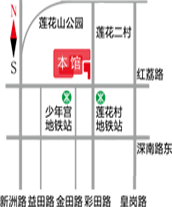
- Landscape - Illustrations of New Sensibility and Spirit - Written in 2019, China Freehand Oil Painting School Joint Exhibition
-
Deng Pingxiang
From the perspective of art history, every revolutionary advancement and transformation in art grows from the transformation of the artist's conscious and unconscious way of viewing (or observing): the Impressionist movement originated from a group of Parisian painters in the 19th century who were not satisfied with the traditional and conservative way of viewing nature, but instead highlighted the expression of color and light; The Courbet Realist School emphasizes that I only paint everything that I can see; As for the itinerant movement in Russia, it is also viewed from a realistic perspective, combined with a movement of ideological criticism. Even Qi Baishi's "decline in age reform" in China actually originated from a change in the way of observation - that is, Qi Baishi proposed a new flower and bird expression pattern of "red flowers and green leaves".
Why do the classic examples of artistic transformation in the West and East all start with visual observation? The reason is that painting (or plastic art) should be classified as "visual art", according to the philosopher Kant's thought, this is the art of visual senses. Kant believed that in human perception, only visual and auditory functions have the realm of sublimation into "spiritual sensations". Therefore, visual can produce great painting and sculpture art, while auditory can produce great music art, such as piano, violin art, and symphony.Whether the sensation develops or sublimates from sensory perception to spiritual perception here is a boundary between the animalistic and spiritual aspects of sensory function. For example, taste and touch cannot reach the realm of spirituality, so there is no such thing as taste and touch art in the world.
Starting with the Italian Renaissance, humanity bid farewell to classical art and entered the realm of modern art. The masters of the Renaissance art movement first took "the discovery of natural beauty and human beauty" as their banner, and gave birth to the great Renaissance art. It was a breakthrough in the transformation of vision and the revolution of observation methods. This is actually a fundamental breakthrough in the way artists observe natural and cultural landscapes. As a result, art returned from heaven to earth, from the divine realm to the secular world, and thus achieved the great visual revolution of "making human feelings become human feelings" (in Hakbuk language), thus completing the fundamental transformation from visual art images. Thus, great literary and artistic works began. The Renaissance lasted for two to three hundred years. The Renaissance began with the artistic movement of human discovery and natural discovery, followed by the social transformation of human liberation and the sanctity of human rights, and the Enlightenment movement in Europe, which led Europe and the Western world as a whole into a new world of modern culture, constitutional democracy, and freedom.
Starting from Impressionist art, European and Western art entered a new historical period. Impressionism began a new era of "Impressionist movement" from the discovery of color and light to the emphasis on sexual expression, thus exerting a strong and philosophical impact and negation on the conservative and outdated official system that weakened or even lost its "emotional quality". The subsequent modernist art movement, led by masters of various modern schools, not only began the modernist art movement with visual change as the precursor, but also followed the process of visual revolution - from visual observation to spiritual observation of the truth of the soul.
At this point, people were amazed to find that at this juncture, Western art and Chinese freehand literati painting had intersected and overlapped! Here, I cannot agree with the views of some theorists who uphold the spirit of nationalism and national essence, who draw simple conclusions based on this, while emphasizing the local art spirit and neglecting Western art (such as the "Non artistic craftsman" theory of Western art, etc.). I believe that looking at the evolution of Western art from the perspective of human spiritual and cultural history follows the so-called "normal development" trajectory, while China is a "precocious" development trajectory, and those who mature early must have innate shortcomings - later, the problem of deep carving in our spiritual and cultural context confirms the difficulties brought about by this "precocious" development.
However, how to deal with the issue of "precocious" correctly requires us to calmly analyze it from a theoretical perspective. Specifically, this "precocious" refers to the Chinese painting art that transcends the sensory process and enters the concept, so Chinese painting did not go through the category of "natural discovery" and entered the rational understanding of "seeking knowledge from things", resulting in the incomplete and immature development of "sensibility". Art is precisely an aesthetic cognitive way of "expressing truth in sensibility" (Feuerbach language) and a way of artistic philosophy. From a philosophical perspective, aesthetics is sensibility, not epistemology, so Chinese painting weakens or even omits writing. The program of generating this intuitive understanding is simply replaced by "copying the a picture copybook", so things like "a picture copybook of plum blossoms", "a picture copybook of pine trees", "a picture copybook of bamboo", etc The popularity of the study of orchid painting has basically blocked the channel of sensory discovery. Such a visual art based on sensibility has no source of vitality - it has no reason to not decline and wither! In the early 1980s, Li Xiaoshan passionately shouted: Chinese painting has no way to the end. Why? In essence, Chinese painting has lost its emotional resources.
Why did Qi Baishi, a farmer carpenter, become a master? Because of his "aging transformation" and his new pattern of "red flowers and green leaves", he reopened the emotional channel of traditional Chinese painting. He brought the feelings and discoveries of the people and farmers into the territory of traditional Chinese painting, thus activating traditional Chinese painting and bringing a new face to Chinese painting!
The proposition of "new sensibility" proposed by Marcuse, the main figure of the "Frankfurt School" in Western philosophy, is the theoretical premise of modern avant-garde art that began with the Renaissance in Western art history. It points out from a philosophical perspective that the origin and growth of all art must originate from the theoretical truth of "new sensibility". Looking back at the development trajectory of freehand oil painting in recent years, why did it start with the "sketching movement"—— Essentially, it is an art movement that starts from sensibility and establishes a "new sensibility" that conforms to the laws of artistic growth and development - its vitality and rationality are all here.
The first principle of sensibility is the cornerstone of epistemology. After sensibility, new sensory resources naturally rise to cognition. Painting is a visual art, and returning to Kant's proposition, vision can and will inevitably rise to the level of spiritual sensation, that is, the metaphysical height. Therefore, the realm of "spiritual observation" and "Inner understanding" in painting has been achieved and realized.
The series of exhibitions planned and organized by the Chinese School of Freehand Oil Painting will cover the theme of this exhibition, "Scenery and View.". It is developed and deepened following the logic of this artistic philosophy (aesthetics).



